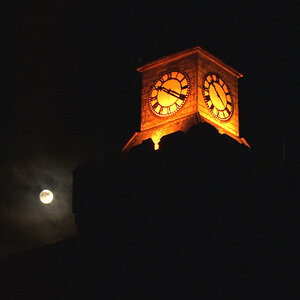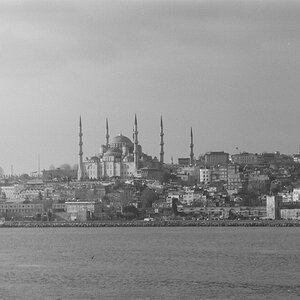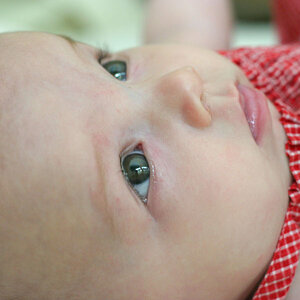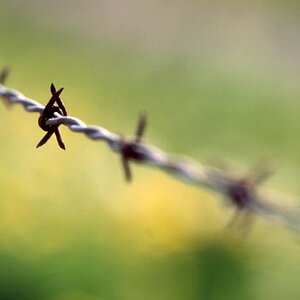Solarflare
No longer a newbie, moving up!
- Joined
- May 24, 2012
- Messages
- 2,898
- Reaction score
- 395
Okay so there was a Petapixel article about Sony FE full frame and its main complaint was:
- The Sony FE mount was originally designed for APS-C only. Therefore the lens mount is more shallow and less wide than one would reasonably expect. Unfortunately this has severe consequences which, depending upon the focal length and maximum aperture desired, may lead to unnecessarily large and complex optics.
Well, um ... duh ?!? Everybody knows ? ... or at least I thought so. I was also under the impression that everybody knows (but the article seems to not mention that):
- The other important issue Sony (and unfortunately all other mirrorless companies except Leica) hasnt solved is angle of incidence. Because if you design wide angle lenses for mirrorless, due to the much smaller distance between lens and sensor thanks to the lack of a mirror box, strong angles of incidence will appear, and usually digital sensors cant handle that. If this issue isnt addressed, wide angle lenses have to be designed as if they've been made for SLRs, meaning they'll be retrofocus and thus bigger and more complex than necessary.
Had Sony addressed these two issues, glas for Sony FE could often be smaller and less complex. Thus also higher image quality, more robust, and cheaper. Again, I was until now under the impression everybody knew that.
I would also like to point out that mirrorless lenses are NOT really smaller per se. Telephoto lenses will stay exactly the same. Except of course one could use stronger telephoto construction since again the distance between lens and sensor is smaller. Which of course will introduce other costs.
All in all - no, personally I dont want mirrorless for their size. I want mirrorless for example for more image quality with wide angle lenses, which is why angle of incidence is a huge issue for me, and for more convenience thanks to an EVF and a different type of autofocus that has no issue to focus closer to the borders and can be made very reliable, without needing calibration.
There is a "rebunk" over at Sonyalpharumors but its, well, meh.
However, the problems with a too small and/or shallow mount are well known. For example thats why Nikon F has no autofocus lens better than f/1.4, and the manual 50mm f1.2 optics tries really hard to squeeze itself in. While the much wider Canon has a 50mm f1.0 with autofocus, even if they stopped producing it.
With Sony, the conditions are even worse, since that mount is wider than Nikon F, but very shallow.
The answer is: Not really, no. Other strategies for more resolution are:
- bigger sensor(!)
- tighter tolerances
- better glas materials and coatings
For example, created much in the same spirit as the Zeiss Otus lenses, Leica came up with the Summicron-M 50mm f2.0 APO. That lens is not much bigger than its non-APO version. By the way, it also beats the Zeiss Otus 55mm in optical performance.
Zeiss simply intentionally choose to take the size road. Which is to me the least desireable. That the final lens is huge is only the first problem.
Also I would like to point out: the OP seriously thinks these are lenses that compare to Zeiss Otus ? What the frak ? On what basis is this claim made ? I'm not even aware Sony is even planning on ever making such a camera, even less preparing their lenses for that.
Besides, I kind of doubt that theres much of a point to create a 100 Megapixel full frame sensor in the first place. IMHO everything above 12 Megapixel for full frame is only getting increasingly stupid. These sensors run into diffraction early, and the image quality doesnt benefit from smaller pixels either. Once I have enough pixels, I much rather want better pixels. Thats why, for more resolution, I much rather would want to have a larger sensor.
But neither comparisons are valid anyway. The first one is an APS-C lens, and nobody claimed the Sony FE mount has issues with APS-C lenses. And its a bad lens, while the 14mm f2.8 is one of the better lenses of the excellent Fuji X lens lineup. The second one is well within the parameters that still allow relatively compact lens design, a focal length close to normal and a small maximum aperture.
It should also be pointed out that the author intentionally used the most fat Fuji camera, to get additional leaverage. All these lenses can be mounted on slimmer Fuji cameras as well.
But this article at "the oneline photographer" is really just pure embarassment:
I decided to follow the articles own advice after that point and stopped reading this b.s.
- The Sony FE mount was originally designed for APS-C only. Therefore the lens mount is more shallow and less wide than one would reasonably expect. Unfortunately this has severe consequences which, depending upon the focal length and maximum aperture desired, may lead to unnecessarily large and complex optics.
Well, um ... duh ?!? Everybody knows ? ... or at least I thought so. I was also under the impression that everybody knows (but the article seems to not mention that):
- The other important issue Sony (and unfortunately all other mirrorless companies except Leica) hasnt solved is angle of incidence. Because if you design wide angle lenses for mirrorless, due to the much smaller distance between lens and sensor thanks to the lack of a mirror box, strong angles of incidence will appear, and usually digital sensors cant handle that. If this issue isnt addressed, wide angle lenses have to be designed as if they've been made for SLRs, meaning they'll be retrofocus and thus bigger and more complex than necessary.
Had Sony addressed these two issues, glas for Sony FE could often be smaller and less complex. Thus also higher image quality, more robust, and cheaper. Again, I was until now under the impression everybody knew that.
I would also like to point out that mirrorless lenses are NOT really smaller per se. Telephoto lenses will stay exactly the same. Except of course one could use stronger telephoto construction since again the distance between lens and sensor is smaller. Which of course will introduce other costs.
All in all - no, personally I dont want mirrorless for their size. I want mirrorless for example for more image quality with wide angle lenses, which is why angle of incidence is a huge issue for me, and for more convenience thanks to an EVF and a different type of autofocus that has no issue to focus closer to the borders and can be made very reliable, without needing calibration.
There is a "rebunk" over at Sonyalpharumors but its, well, meh.
Well, not exact laws of physics, because lens design actually is more basically guessing what a good lens might be, then raytracing it to check its actual performance. So its a lot like fishing in the dark, really.But here is Sator’s first mistake. He assumes FE lenses have to be big because “of the law of physics“. Please Sator give us the physics formula that says that?
However, the problems with a too small and/or shallow mount are well known. For example thats why Nikon F has no autofocus lens better than f/1.4, and the manual 50mm f1.2 optics tries really hard to squeeze itself in. While the much wider Canon has a 50mm f1.0 with autofocus, even if they stopped producing it.
With Sony, the conditions are even worse, since that mount is wider than Nikon F, but very shallow.
Um. What was this line about "laws of physics" again ?It’s a future proof lens made for 100+ Megapixel FF sensor. And to achieve such a quality you have to make lenses…bigger!
The answer is: Not really, no. Other strategies for more resolution are:
- bigger sensor(!)
- tighter tolerances
- better glas materials and coatings
For example, created much in the same spirit as the Zeiss Otus lenses, Leica came up with the Summicron-M 50mm f2.0 APO. That lens is not much bigger than its non-APO version. By the way, it also beats the Zeiss Otus 55mm in optical performance.
Zeiss simply intentionally choose to take the size road. Which is to me the least desireable. That the final lens is huge is only the first problem.
Also I would like to point out: the OP seriously thinks these are lenses that compare to Zeiss Otus ? What the frak ? On what basis is this claim made ? I'm not even aware Sony is even planning on ever making such a camera, even less preparing their lenses for that.
Besides, I kind of doubt that theres much of a point to create a 100 Megapixel full frame sensor in the first place. IMHO everything above 12 Megapixel for full frame is only getting increasingly stupid. These sensors run into diffraction early, and the image quality doesnt benefit from smaller pixels either. Once I have enough pixels, I much rather want better pixels. Thats why, for more resolution, I much rather would want to have a larger sensor.
The Full Frame Sony with 16mm f/2.8 APS-C lens is way smaller than the APS-C X-PRO2 with 14mm f/2.8 lensOf course I do know the Fuji lens is a better lens here (and it’s 14mm and not 16mm).
Again, its not laws of physics as such, but a general trend in lens design. Thus finding some exceptions of the rule is perfectly possible.Let’s make a more fair comparison: Here is the Zeiss FE 35mm f/2.8 vs the 18mm f/2.0 (29mm f/3.0 FF equivalent) comparison by CameraSize (re-aligned on the LCD screen)
But neither comparisons are valid anyway. The first one is an APS-C lens, and nobody claimed the Sony FE mount has issues with APS-C lenses. And its a bad lens, while the 14mm f2.8 is one of the better lenses of the excellent Fuji X lens lineup. The second one is well within the parameters that still allow relatively compact lens design, a focal length close to normal and a small maximum aperture.
It should also be pointed out that the author intentionally used the most fat Fuji camera, to get additional leaverage. All these lenses can be mounted on slimmer Fuji cameras as well.
But this article at "the oneline photographer" is really just pure embarassment:
... WHAT ?I didn't even read the whole article, much less all the comments.
Oh, personal attacks first, yay ! And an unreasonable one to boot, since the author has also used other systems, including Sony FE.First, note that the author reveals at the very end of the PetaPixel piece (right, most people won't read that far) that he's a Fuji X user.
I decided to follow the articles own advice after that point and stopped reading this b.s.



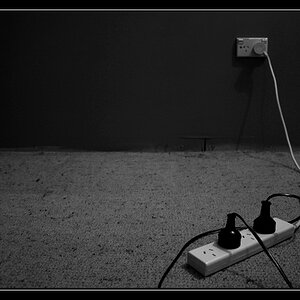
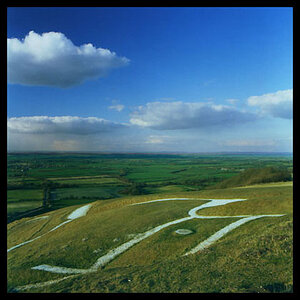

![[No title]](/data/xfmg/thumbnail/39/39292-4169a355b794ae9735845c4ad45d06ff.jpg?1619738958)
